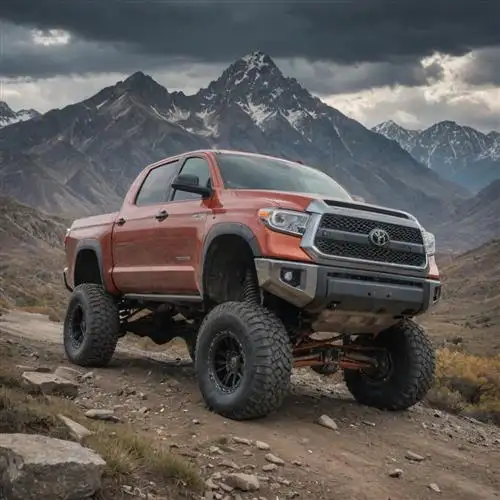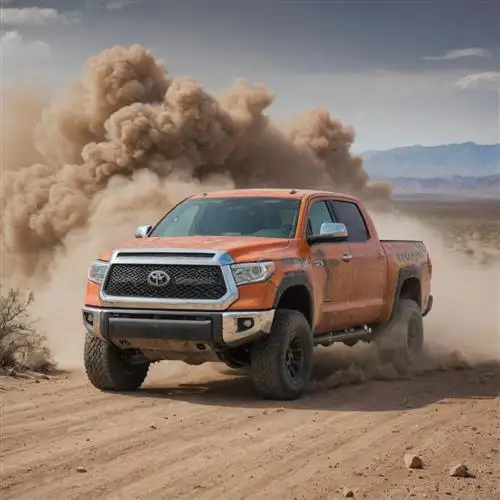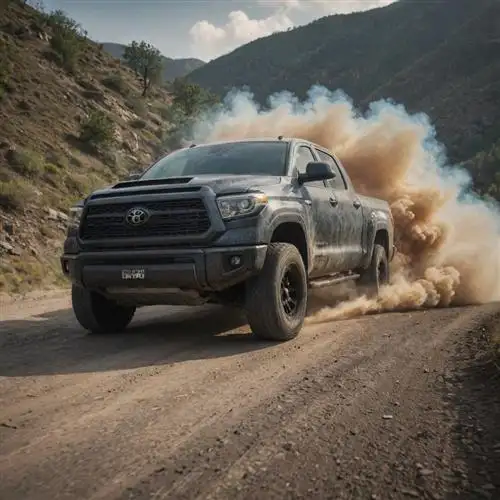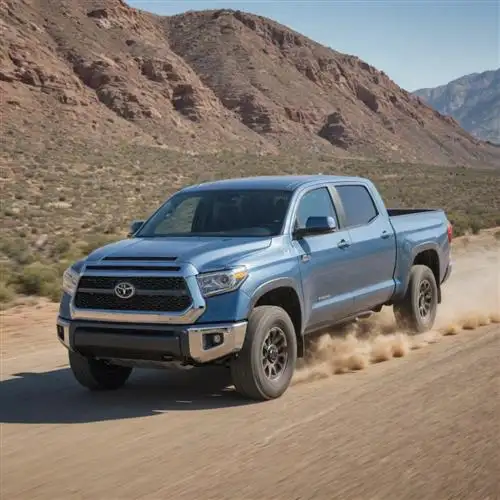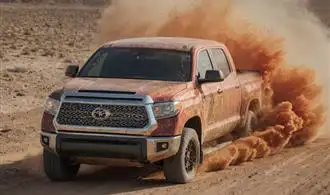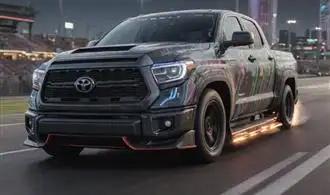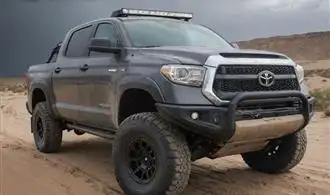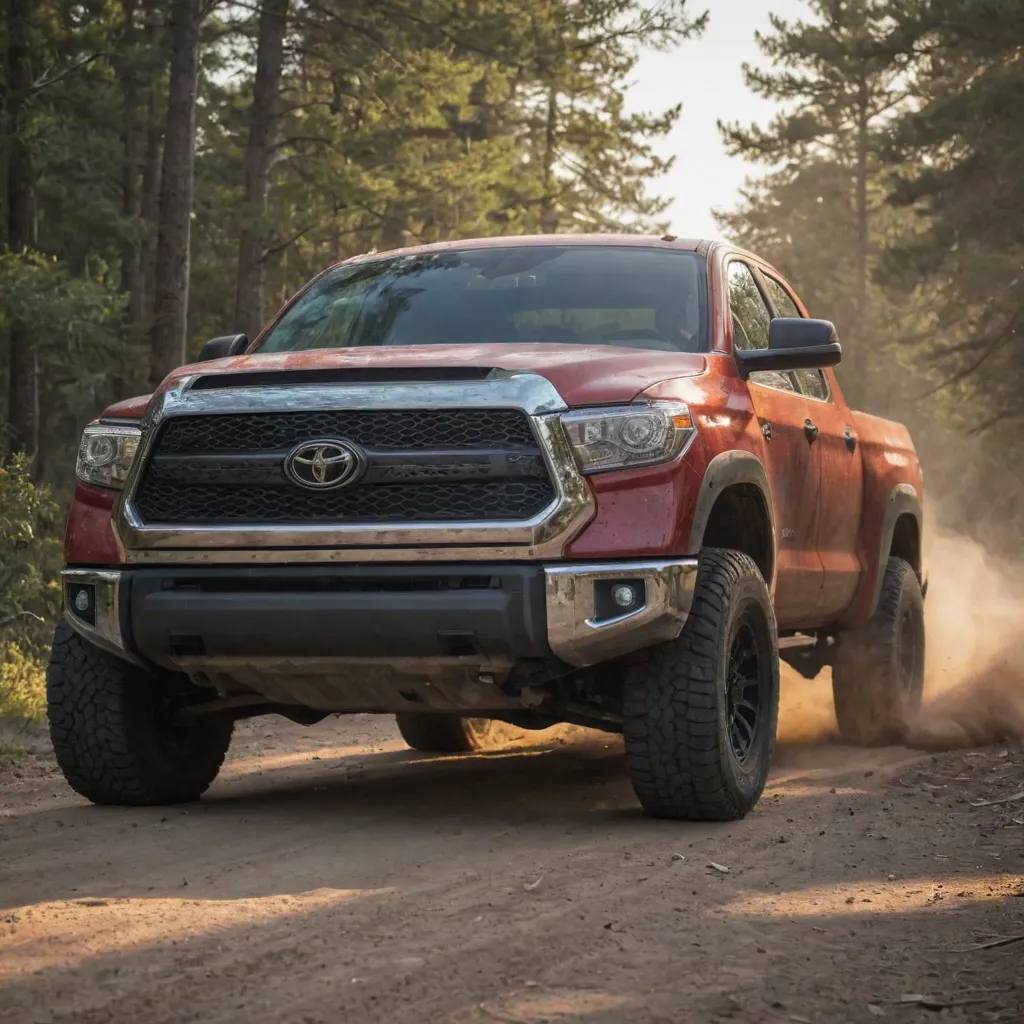
Suspension Upgrades for Increased Ride Height
Suspension upgrades are a crucial component of elevating your Toyota Tundra's performance. By enhancing the suspension system, you can achieve increased ride height, improved off-road capabilities, and a more comfortable driving experience. One of the most effective ways to achieve this is through the installation of lift kits, which can provide a noticeable increase in ground clearance and a more aggressive, bold appearance.
When considering suspension upgrades for your Tundra, it's essential to understand the different types of lift kits available. Body lifts, for example, raise the body of your vehicle while leaving the suspension components in their original position, allowing for larger tires without affecting the overall ride quality. In contrast, suspension lifts involve modifying the suspension components themselves, providing a more substantial increase in ride height and enhanced off-road performance.
Regardless of the type of lift kit you choose, it's crucial to ensure that the components are compatible with your Tundra's make, model, and year. Consulting with a knowledgeable automotive specialist or researching thoroughly can help you make an informed decision and avoid any potential issues during installation. Unlock Your Toyota Tundra's True Potential with These Upgrades to further enhance your vehicle's capabilities.
When it comes to suspension upgrades, the quality of the components is paramount. Investing in high-quality, reputable brands can ensure a smooth and reliable ride, as well as improved handling and stability, especially when tackling challenging off-road terrain. Additionally, it's crucial to consider factors such as the intended use of your Tundra, your driving style, and the local climate and terrain, as these can all influence the optimal suspension setup for your needs.
Wheel and Tire Modifications for Enhanced Traction
When it comes to elevating the performance of your Toyota Tundra, one of the most impactful upgrades you can make is to the wheels and tires. The right combination can significantly improve traction, grip, and overall handling, transforming the driving experience on and off-road. Let's delve into the key considerations for wheel and tire modifications that will take your Tundra's capabilities to new heights.
Tire Selection: The tires on your Tundra are the primary point of contact with the ground, and the right choice can make all the difference. For enhanced traction, look for all-terrain or off-road tires that feature a more aggressive tread pattern and deeper lugs. These tires excel in providing grip on loose surfaces, such as mud, sand, and gravel, while still maintaining a comfortable ride on paved roads. Consider options from reputable brands like Toyo, BFGoodrich, or Nitto, and ensure the tires are rated for your Tundra's load capacity and wheel size.
Wheel Upgrades: Complementing the tires, upgrading your Tundra's wheels can further enhance traction and performance. Opt for wheels with a wider design, as this will provide a larger contact patch with the ground, improving grip and stability. Additionally, consider wheels with a more aggressive offset, as this can help with clearance and improve the overall stance of your Tundra. When selecting wheels, ensure they are compatible with your vehicle's lug pattern and brake system to avoid any potential issues.
Lift Kits: Another key modification to consider is a lift kit, which can raise the ride height of your Tundra. This not only enhances the aggressive, off-road aesthetic but also provides increased ground clearance. A lift kit allows for the installation of larger tires, which in turn boosts traction and capability. However, it's essential to choose a high-quality lift kit from a reputable manufacturer and have it properly installed to maintain the integrity and safety of your vehicle.
Suspension Upgrades: Complementing the lift kit, investing in upgraded suspension components can further elevate your Tundra's performance. This may include heavy-duty shocks, coil springs, and control arms, all designed to handle the demands of off-road driving. These upgrades not only improve traction but also enhance the overall ride quality and handling characteristics of your Tundra, making it more capable and comfortable in any terrain.
Engine Tuning for Boosted Power and Acceleration
Unlocking the true potential of your Toyota Tundra's engine requires strategic engine tuning. Whether you're seeking improved throttle response, higher horsepower, or greater fuel efficiency, the right engine tuning can transform your Tundra's performance. In this guide, we'll explore the intricacies of engine tuning, with a focus on techniques that can deliver a tangible boost in power and acceleration.
At the heart of engine tuning lies the careful optimization of the air-fuel ratio and ignition timing. By fine-tuning these parameters, you can achieve a more efficient combustion process, ultimately translating to increased power output. One effective approach is to install a performance intake system, which enhances the flow of air into the engine, allowing for greater oxygen intake and, in turn, more complete fuel combustion.
Complementing the intake upgrades, exhaust system modifications can also contribute significantly to boosted performance. By reducing backpressure and improving the flow of spent gases, a high-performance exhaust system can facilitate more efficient engine breathing, leading to a noticeable increase in power and acceleration.
Beyond the intake and exhaust, engine management tuning is crucial. Advanced engine control units (ECUs) offer the ability to tweak parameters such as ignition timing, fuel injection, and boost levels (for turbocharged models). By dialing in these settings, you can unleash the full potential of your Tundra's powerplant, delivering a more responsive and engaging driving experience.
It's important to note that engine tuning is not a one-size-fits-all solution. The optimal settings will vary depending on factors such as engine modifications, driving conditions, and individual preferences. Working with a reputable tuning specialist who has expertise in Toyota Tundra engine tuning is highly recommended to ensure a safe and effective optimization process.
Aerodynamic Enhancements for Improved High-Speed Stability
Elevating the performance of your Toyota Tundra requires a multifaceted approach, and one crucial component is optimizing its aerodynamics. By enhancing the aerodynamic properties of your Tundra, you can unlock impressive gains in high-speed stability, fuel efficiency, and even top-end speed. In this section, we'll dive deep into the world of aerodynamic enhancements and explore the strategies you can employ to transform your Tundra into a high-speed powerhouse.
One of the primary factors in achieving superior high-speed stability is reducing drag. Lowering the Tundra's coefficient of drag (Cd) can have a profound impact on its behavior at highway speeds. This can be accomplished through a variety of modifications, such as installing a front air dam, side skirts, and a rear spoiler. These components work in harmony to streamline the airflow around the vehicle, minimizing turbulence and keeping your Tundra firmly planted on the road.
Another crucial aspect of aerodynamic enhancement is managing airflow through the engine bay and over the hood. By incorporating a functional hood scoop or vents, you can channel cool air directly to the engine, enhancing cooling efficiency and reducing the risk of heat-related performance issues. Additionally, strategically placed vents can help to reduce lift and improve overall stability at high speeds.
For those seeking the ultimate in aerodynamic performance, a body kit or aero package designed specifically for the Toyota Tundra can be a game-changer. These kits, available from both OEM and aftermarket suppliers, are engineered to seamlessly integrate with the Tundra's design, providing a comprehensive solution that optimizes airflow over every surface of the vehicle. By investing in a high-quality aero package, you can unlock a level of high-speed stability and responsiveness that will leave you in awe.
Braking System Upgrades for Confident Stopping Power
The Toyota Tundra is a powerful and capable full-size pickup, but its stock braking system may not always meet the demands of aggressive driving or heavy hauling. Upgrading your Tundra's brakes can provide improved stopping power, better pedal feel, and increased confidence behind the wheel. Whether you're tackling steep inclines, towing a heavy trailer, or simply want to sharpen your truck's overall performance, these braking system upgrades can make a significant difference.
Brake Pad Replacements: One of the easiest and most cost-effective upgrades is to replace your Tundra's stock brake pads with a set of high-performance pads. Look for pads designed for increased friction, better heat dissipation, and improved stopping power. Ceramic and semi-metallic pads are popular choices, offering a balance of durability, fade resistance, and low noise.
Brake Rotor Upgrades: Alongside new pads, consider upgrading your Tundra's brake rotors. Larger, slotted, or drilled rotors can provide more efficient heat dissipation, reducing brake fade and improving overall braking performance. Upgrading to cross-drilled or slotted rotors can also enhance the appearance of your Tundra's wheel wells.
Brake Caliper Upgrades: For a more comprehensive braking system overhaul, consider upgrading your Tundra's brake calipers. Aftermarket calipers, often made of high-strength aluminum, can provide increased clamping force, better heat management, and a more responsive pedal feel. This upgrade is particularly beneficial for those who frequently tow heavy loads or engage in spirited off-road driving.
Brake Fluid Upgrades: The type of brake fluid used in your Tundra can also impact the overall braking performance. Switching to a high-performance, high-boiling-point brake fluid can help resist brake fade and maintain consistent pedal feel, even under extreme conditions.
Stainless Steel Brake Lines: Replacing your Tundra's stock rubber brake lines with stainless steel braided lines can improve brake pedal responsiveness and reduce the risk of fluid leaks. Stainless steel lines are less prone to swelling and deformation, ensuring a firmer and more predictable braking experience.

